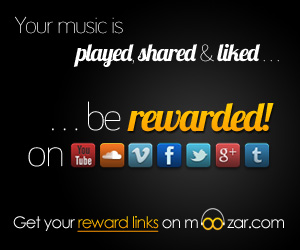By Jason Epstein
January 9, 2001. That’s when iTunes version 1.0 debuted. Now it’s available in 23 languages, syncs a host of Apple devices and provides a hell of a lot more functionality. But it did get slower and more unwieldy as time went on, (does anyone remember iMix or Ping? No? Good, because they’re not around anymore anyway.)
iTunes 11 arrived late last week after some delays. The company had originally slated the program for release back in October, but told CNET that it would “take a little extra time to get it right.” It arrived to very little fanfare, and that’s no surprise since iTunes is known to be a meddlesome means to an end for most users. It’s largely the same program that we’ve had a long-term love/hate relationship with, albeit with some nice upgrades, evolving the program toward something users can be at least content with.
Let’s talk about some of the pros:
For one, it’s faster. iTunes 11 doesn’t interrupt playback for as long when syncing a device and the program started up in about 6 seconds on my year old desktop, which is far faster than iTunes 10 did. And during your install, thankfully the new iTunes doesn’t have add-ons that mess with Quicktime or any other Apple software.
The new iTunes store looks like a mix between Hulu and Netflix and has a new feature that allows users to check their histories. Hover over the improved iTunes mini player to see player controls and the option to search through your library from within the mini player. This is a great feature.
iTunes 11 also sports a clearer, larger font and a simpler, less cluttered interface. The layout is brighter looking, with the left navigation sidebar gone in favor of top navigation.
Next to each song there’s an arrow that allows you to do things like add the song to a playlist, add the song right after your current track, go right to the album or go right to your collected discography of the band. There’s also a nice drop down menu for switching through your various media libraries. Playlists are easy to create, just use the “Add” button, name it, drag songs or albums to your list and click “Done”. And the playlist pops up on the right side so you can employ the drag and drop method at any time from the same window.
Now let’s go over some of the cons:
This new layout and functionality isn’t without its drawbacks. iTunes 11 does nothing to alleviate its complex syncing and content management rules that whole tutorials have needed to be written about for users to be able to use the software to suit their individual needs. I was also unable to re-size the player properly resulting in it taking up 2/3 of my 20″ monitor. And of course, the 80+ MB program has a lengthy install and requires a restart.
iTunes 11 touts itself as “the easiest way to enjoy the music, movies, TV shows, apps, and books you’ve already got — and shop for the ones you want to get.” Are these capabilities something people really want or do they just want to play music? What if we don’t want to be movie watchers, shoppers and browsers on iTunes? What if we just want to use our music players to play music?
Perhaps it’s because I’m new to iTunes 11, but I ran into a problem. I thought I had added an album to go to the end of my playlist but it was queued to play next and I could not figure out why or how to cancel it without going back to manually play the next song I had meant to play. Not fun.
And finally, some toss-ups:
In iTunes 11, there’s more iCloud integration to sync all of your devices. For the most part, it’s a good addition, but it does raise questions like what if you don’t have enough space on a 16GB iPhone and loads on your 160GB iPod Classic?
Upon selecting albums, they expand in place and you can see the iTunes store right from your library. Whether this is a plus or minus to you depends on how often you use the iTunes store. It can be incredibly convenient for frequent buyers, or aggravating to those who want nothing to do with it.
Overall, it’s a better program that’s still plagued by its inherent stubbornness. As always, thank you Apple, and eff you Apple…
















Comments are closed.